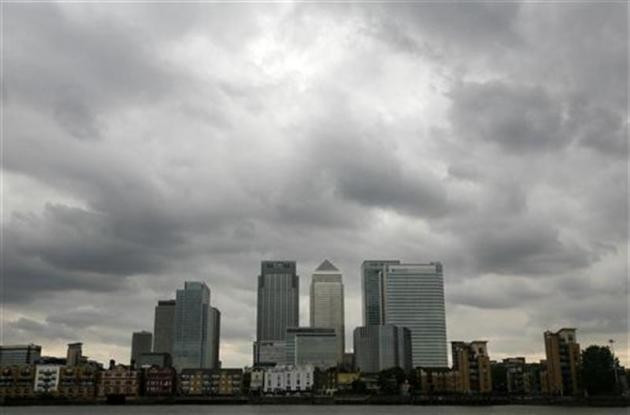Basic Guide to Libor Fixing Scandal: Who, Where, What, When, Why?

After European Securities and Markets Authority and the European Banking Authority proposed to move the setting and supervision of Libor from London to Paris, we decided to deliver a basic guide to everything you need to know about the Libor fixing scandal.
What is Libor?
The London Interbank Offered Rate (Libor) is a lending rate that is set by a panel of banks.
Libor valuations directly influence the value of trillions of dollars of financial deals between banks and other institutions.
The benchmark reference rates are used in euro, US dollar and British sterling over-the-counter (OTC) interest rate derivatives contracts and exchange traded interest rate contracts.
According to FSA data, the notional amount outstanding of OTC interest rate derivatives contracts in the first half of 2011 has been estimated at $554tn.
The total value of volume of short term interest rate contracts traded on LIFFE in London in 2011 was €477tn, including over €241tn relating to the three month Euribor futures contract, which is actually the fourth largest interest rate futures contract by volume in the world.
How is it Libor Set?
Before the scandal, and the various sets of recommendations to change the way Libor is calculated in the aftermath of mass manipulation, the key lending rate was set by a group of banks.
Every day, Libor setters at banks submit their rate levels, which are an estimate of how much it would cost to borrow money from each other on different currencies and products, to Thomson Reuters Corp, which then calculates the data on behalf of the British Bankers Association (BBA).
The highest and the lowest submissions are stripped from the final set of data and the average rate level is calculated from the remaining submissions and published for individual currencies before midday in London.
So for instance, even if one bank set the rate higher or lower than any of the other banks, then that number would be stripped out.
How Did Authorities Find that Bank Employees were Manipulating Rates?
Contrary to popular belief that investigators determined manipulation through reams of financial data, it was actually through instant messenger (IM) and emails conversations, which helped nail bank employees that tried to rig rates.
When the Financial Services Authority (FSA), now the newly established Financial Conduct Authority (FCA), gave evidence in front of UK parliament over the Libor rigging scandal, one of the chiefs confirmed that it was through these mediums that it was able to pinpoint manipulation and collusion to fix rates.
In documents published by the FSA last year, traders at Barclays were revealed to have laughed and joked about manipulating rates for the financial benefit of their friends.
"Hi all, just as an FYI, I will be in noon'ish on Monday," wrote one of Barclays Bank's submitters.
"Noonish? Who's going to put my low fixings in? Hehehe," came the cheeky reply from one of Barclays' traders.
Moreover, according to rafts of transcripts released by the US Commodity Futures Trading Commission (CFTC), Department of Justice (DoJ) and the FSA earlier this year, main pieces of evidence that pushed regulators to determine rate rigging, came in the form of emails and IM text.
Here is an example:
December 5, 2007:
Yen Trader 2: FYI libors higher again today
Yen Trader 4: 'ucksake. keep ours low if poss. don't understand why needs to go up in yen
Yen Trader 2: no reason dude[,] [Bank C] and [Bank D] went high yest
Yen Trader 4: send the boys round
Yen Manager: pure manipulation going on
Which Banks Have Settled with Regulators?
Barclays was the first to settle with UK and US authorities in June 2012 for £290m.
Nearly six months later and UBS agreed a record $1.5bn fine with US, UK and Swiss authorities for its role in manipulating a number of key benchmark interbank lending rates - including a record £160m penalty with the FSA.
It also admitted to one count of wire fraud relating to rigging rates in Yen.
In February 2013, RBS became the third major bank to settle with the CFTC, DoJ and FSA for £390m for civil and criminal charges.
The CFTC charged the bank with false reporting, manipulation and attempted manipulation of the interbank lending rate that was denominated in yen and Swiss francs between 2006 and 2010.
It involved more than a dozen RBS derivatives and money market traders..
Crucially, a RBS subsidary, RBS Securities Japan Limited, also pleaded guilty to one criminal charge of wire fraud.
Meanwhile, previous to the US, UK and European authorities settling with a number of banks, Japan has already cracked down on banks that have been seen to manipulate or attempt to rig the Tokyo interbank offered rates (Tibor).
Japanese regulator Securities and Exchange Surveillance Commission (SESC) suspended some banks' operations, such as Citigroup and UBS, after the SESC found that some staff attempted to manipulate Tibor rates.
In a UBS report last year, it said it had reached immunity deals with the DoJ and regulators in Switzerland and Canada, giving it protection against enforcement action in relation to certain transactions and submissions for Yen Libor.
How Does Libor Affect the Consumer?
After numerous global investigations, if the authorities find that banks had successfully moved rates at any given time, this could have a profound effect on the everyday person on the street and small to medium enterprises.
The effect on the general public can be felt on an immediate level because the wholesale rates influence how much homeowners pay on variable rate loans and mortgages.
Some mortgages are influenced by Libor, which mean many homeowners could have been making monthly payments that were tracking rates that were artificially affected.
Even if a homeowner had not been on a variable rate, Libor is what banks use to set interest rates when it comes to charging interest on loans, credit cards and other mortgages.
© Copyright IBTimes 2025. All rights reserved.






















